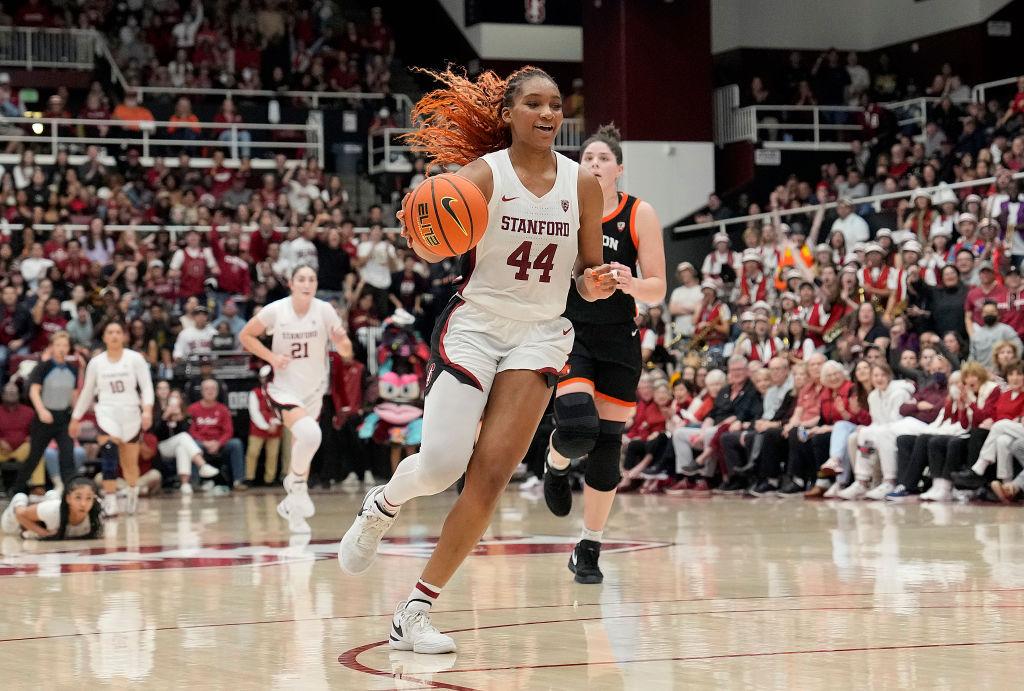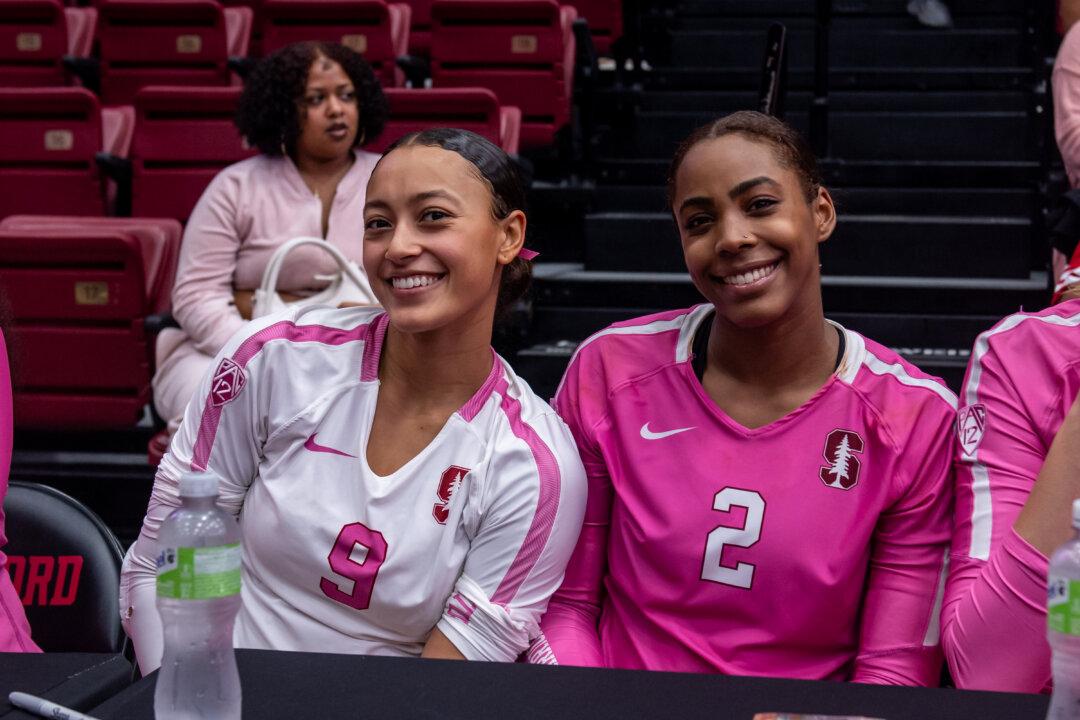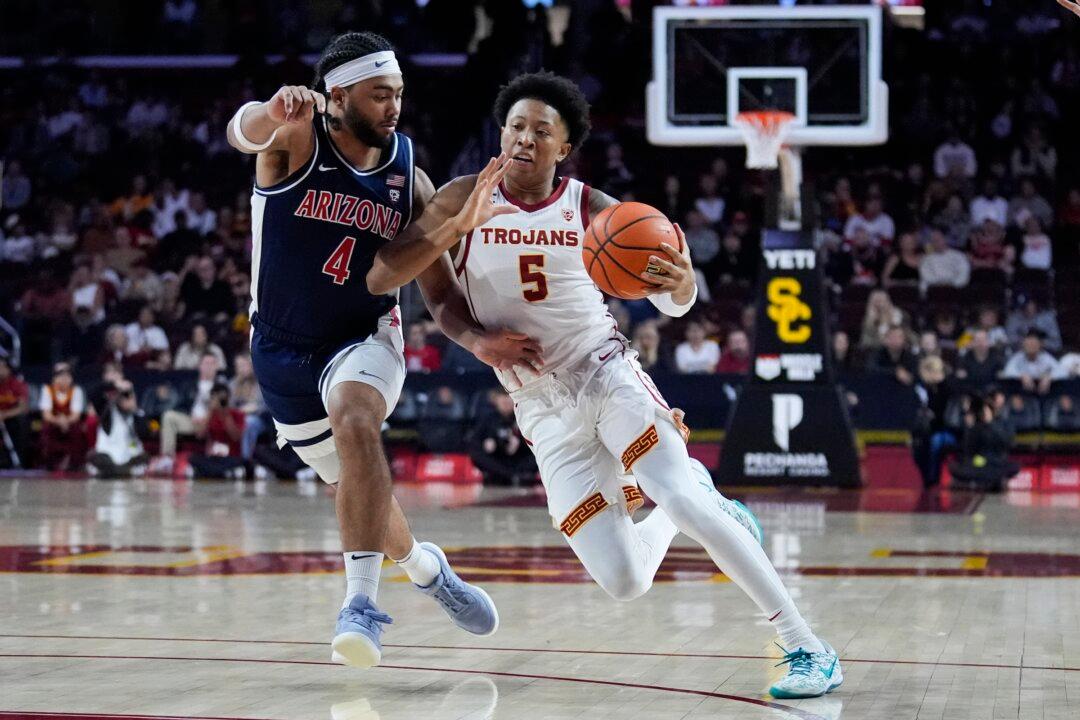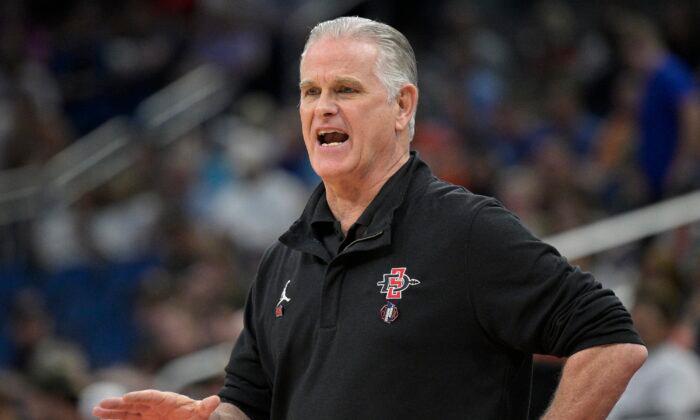It’s getting more and more tangible for the men’s and women’s basketball programs at California and Stanford. They really are going to be competing in the Atlantic Coast Conference next season.
While specific schedules remain to be determined, the ACC on Feb. 29 revealed future conference opponents for each of the league’s members.
As part of the ACC’s 20-game men’s league schedule next season, Cal and Stanford will be linked as “primary partners” with fellow conference newcomer Southern Methodist. Those teams will play home-and-home series against each other, with the Golden Bears also playing home and away against North Carolina State, and the Cardinal facing Wake Forest at home and on the road.
Cal and Stanford will square off against their other 14 ACC foes once each, with seven home dates and seven away games.
“We are thrilled to announce each school’s opponents for our first year as an 18-member league,” ACC Commissioner Jim Phillips said in a conference press release. “We look forward to having Cal, SMU, and Stanford join the ACC this summer and we know there’s already great excitement and anticipation for our teams, alumni, and fans.”
ACC presidents and chancellors voted Sept. 1 to add Cal and Stanford, along with Dallas-based SMU, beginning with the 2024-25 school year. The move came after eight other Pacific 12 Conference members jumped to other leagues.
With UCLA, USC, Oregon, and Washington having bolted for the Big Ten, and Arizona, Arizona State, Colorado, and Utah having skipped to the Big 12, the ACC turned out to be the only option if Cal and Stanford wanted to avoid being left without a major-conference affiliation. Oregon State and Washington State are now in exactly that unenviable situation.
Given the ACC’s rich basketball tradition and a footprint that has grown from its 1953 founding in the South Atlantic portion of the United States to also include schools in the Northeast, the shift figures to provide quite a culture shock for the Bears and Cardinal.

Cal was a charter member of what began as the Pacific Coast Conference in 1915, and Stanford joined three years later.
“The travel will be challenging,” Cardinal women’s Coach Tara VanDerveer told California Insider in October. “They’re looking to schedule one trip before Christmas, and then three after Christmas, maybe one at the beginning of January, one at the end of January, and one in February. When you spread them out that way, it doesn’t feel that bad.”
The prospect of charter flights could also significantly ease the travel burden, Ms. VanDerveer said, but with the final season of the Pac-12 winding down, there is also the reality of longtime relationships with other schools falling by the wayside.
After her team’s 81–67 loss Feb. 25 at Stanford, Arizona State Coach Natasha Adair expressed hope that the Sun Devils and Cardinal can continue to meet in non-conference games.
“We’re upset about losing the rivalries we have in the Pac-12,” Ms. VanDerveer said. “We’re going to try to keep them going as much as we can. We’re going to play all the Pac-12 schools that want to play. We also have a great rivalry with Gonzaga.”
Cal’s women, as well as the Bears’ and Cardinal’s men’s teams, are likely to follow suit by playing much of their non-conference schedules on the West Coast, hopefully against one-time Pac-12 opponents.
The ACC includes four schools in North Carolina—the University of North Carolina in Chapel Hill, Duke in nearby Durham, North Carolina State in Raleigh, and Wake Forest in Winston-Salem. Florida State and Miami, as well as Virginia and Virginia Tech, give the states of Florida and Virginia two representatives each.
Other full ACC members are Boston College, Clemson, Georgia Tech, Louisville, Pittsburgh, and Syracuse. While remaining independent in football, Notre Dame participates in other ACC sports, including men’s and women’s basketball. A scheduling agreement calls for the Fighting Irish to play at least five ACC football opponents per season.
Cal’s men’s basketball team next season will also host Boston College, Florida State, Miami, Syracuse, Virginia, Virginia Tech, and Wake Forest, while also visiting Clemson, Duke, Georgia Tech, Louisville, North Carolina, Notre Dame, and Pitt.
Stanford’s men will also have home dates against Boston College, Florida State, Miami, North Carolina State, Syracuse, Virginia, and Virginia Tech, while also playing road games against Clemson, Duke, Georgia Tech, Louisville, North Carolina, Notre Dame, and Pitt.
The ACC’s women’s schedule will work differently, with each team playing an 18-game conference schedule and having a home-and-home series against just one “primary partner.” For Cal and Stanford, that will be each other.
Each of the two Bay Area schools next season will also host Boston College, Florida State, Georgia Tech, Miami, North Carolina, North Carolina State, Pitt, and Syracuse, and play on the road against Clemson, Duke, Louisville, Notre Dame, SMU, Virginia, Virginia Tech, and Wake Forest.
The home and road opponents will be reversed in 2025-26.
Next season’s full schedule, including game dates, times, and broadcast information, will be released early this fall, the ACC said.





